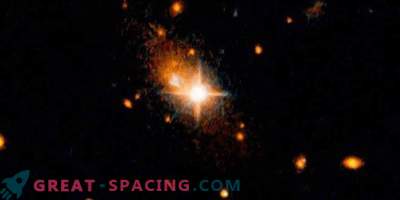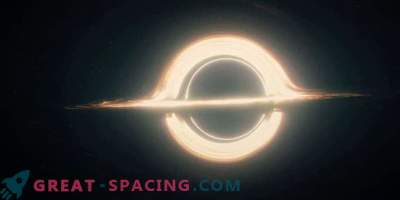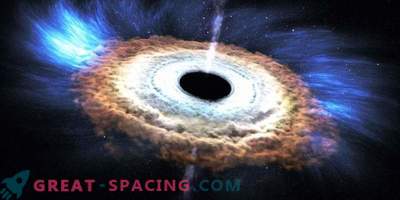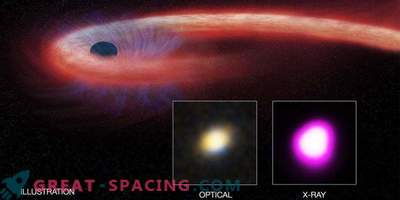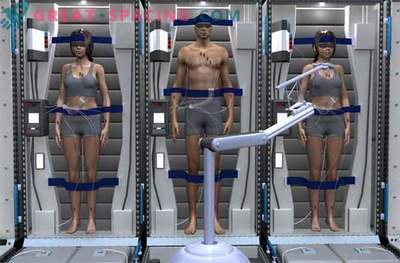
Artistic vision of the event of tidal destruction that occurs when the star passes at a deadly close distance to a supermassive black hole.
For the first time, scientists were able to directly display the formation and expansion of a rapidly moving stream of material ejected during the destruction of a star by a supermassive black hole.
The researchers tracked the event using radio and IR telescopes, including an array of VLBA. The survey focused on a pair of colliding Arp 299 galaxies distant from us by almost 150 million light years. In the core of one of the galaxies, a black hole (20 million times more massive than the Sun) was fed by the remnants of a crushed star (twice the solar mass).
In this event, revealed only a small number of such star deaths, called the events of tidal destruction. But it is assumed that this may be common. Theorists believe that the material released from the doomed star forms a rotating disk around the black hole, triggering intense X-rays and visible light, and also jets it out of the disk poles at the speed of light.
The process was first noticed on January 30, 2005, when astronomers used the William Herschel telescope in the Canary Islands, recording a bright burst of IR rays from the nucleus of a single galaxy in a pair of Arp 299. On June 17, 2005, the VLBA showed a new source of radio rays from the same place. Over time, the new object remained bright in IR and radio waves, but not in visible light and X-rays. Most likely, dense interstellar gas and dust near the galactic center absorbed x-rays and visible light, and then released it in the form of IR radiation. For IR observations, the Northern Optical Telescope (Canary Islands) and the NASA Spitzer Space Telescope were used.
The ten-year review showed that the radio source is expanding in one direction. The material in the jet moved at an average of a quarter the speed of light. But radio waves are not absorbed in the galactic core and make their way to our planet.
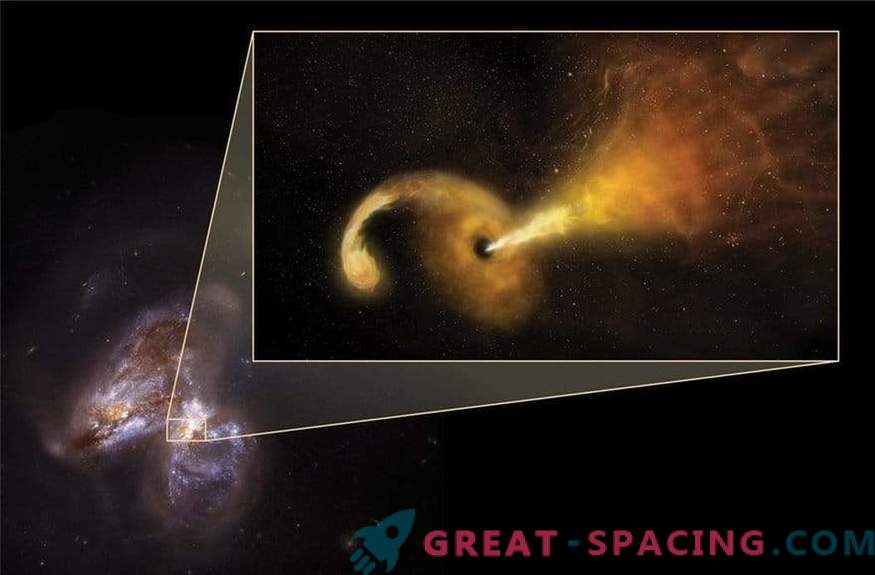
An artistic vision of tidal destruction that occurs when a star approaches a deadly close distance to a supermassive black hole. Scaling occurs from the central region of the Arp 299B galaxy merging with Arp 299A (on the right)
The survey used several radio telescope antennas, separated by thousands of miles, to get the opportunity to see small details. Most of the galaxies have supermassive black holes filled with millions of solar masses in the nuclei. In a black hole, the mass is so concentrated that it creates a powerful gravitational pull. When the holes are actively fed, then pull the material from nearby objects. It forms a rotating disk around a black hole, releasing superfast jets of particles. This phenomenon is seen in radio galaxies and quasars. But most often black holes do not feed, because they are far from objects to a safe distance. Tidal destruction events can provide a unique opportunity to understand the processes of formation and evolution of such jets. Perhaps such events were common in the distant universe, so their study will allow us to understand the environment in which galaxies were created billions of years ago.
This discovery was a complete surprise. The initial infrared explosion was noticed as part of a project aimed at finding supernova explosions. In Arp 299, many stellar explosions were observed, which is why the galaxy was called a supernova factory. Only in 2011, the radio-emitting part began to show lengthening. Further observations showed that the expansion is growing, confirming the presence of a jet, rather than a supernova.

